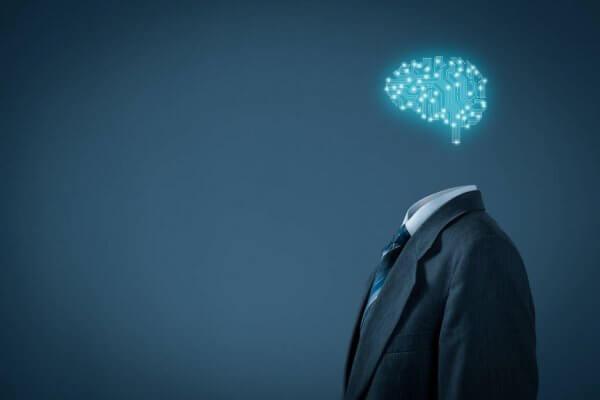Artificial Intelligence is a program that mimics the human mind. They can be used to play games, make decisions or even write articles. Artificial intelligence has been around for decades, but only recently it has become widely accepted and understood by the general population.
Artificial intelligence programs are usually made up of small “agents” which can communicate with each other about what they see (called perception) and what they think (called cognition). They can then change their behavior based on what they perceive and think about – this is called learning.
Despite the complexity of Artificial Intelligence today, there is still no perfect Artificial Intelligence program capable of beating humans in long term complex strategic games like Chess or Go (a popular strategy game from Asia).
Also Read: What is Machine Learning? Explained
However, Artificial Intelligence is getting better and better every year, and we can expect Artificial Intelligence to beat humans in Chess and Go in the near future.

What do you think Artificial Intelligence will be like? Is Artificial Intelligence a threat or an opportunity for humanity?
Artificial intelligence has been around for decades but only recently it has become widely accepted and understood by the population Artificial intelligence programs are usually made up of small “agents” who can communicate with each other about what they see Artificial intelligence is getting better and better every year. We may expect Artificial Intelligence to beat humans in Chess.
The History of Artificial Intelligence
Artificial intelligence as we know it today started as early as the 1950s after Alan Turing published his paper “Computing Machinery and Intelligence”. In 1962, Arthur Samuel defined the first AI program that could learn from data.
AI was being used already then, but Artificial intelligence advanced greatly when computers became more advanced. Now Artificial intelligence programs have become much more common history of Artificial Intelligence
Pre-historic era – the first AIs were simple pattern recognition programs made to recognize pictures of cats and dogs. A program could only recognize pictures that had more than half of the pixels white and less than half a gray.

But as soon as computer power increased computers became better and more complex and pattern recognition systems become more powerful, but still couldn’t solve real-life problems like recognizing faces or reading street signs.
1980’s – Neural networks were invented and gave computers the ability of pattern recognition, but neural networks were complex and hard to understand. 1990’s – Genetic algorithms helped artificial intelligence programs become more intelligent and solve issues we couldn’t even dream about. 2000’s – Deep Learning changed our view of Artificial Intelligence forever
AI was used already in the 1960s, but it advanced greatly when computer power increased. Computers became more complex Artificial intelligence programs, became better pattern recognition systems, became more powerful with help from the neural networks.
The Future of Artificial Intelligence
The future of artificial intelligence (AI) may be hazy and unclear to many people today, but New York Times bestselling author and futurist Dr. Michio Kaku say by the mid-2040s it will become as smart as human beings.
In his latest book “Physics of the Future: How Science Will Shape Human Destiny and Our Daily Lives by the Year 2100,” which was released Tuesday, Dr. Kaku discusses how AI technology can help us up to our standards of living in health care, transportation, education and entertainment over the next century. Basically, everything we do today will be affected greatly by this technology.

Though it may still be in its adolescence, AI is becoming much more mainstream today than it was decades ago. Just last month, Microsoft released an artificial intelligence Twitter account called “Tay” (https://twitter.com/TayandYou) which was designed to engage people in creative conversations about anything and everything.
Unfortunately, the software emulated humanity too well and soon spawned offensive tweets that led the company to delete her within 24 hours of launching her.
Kaku says despite this false start, the future of AI is not only bright but inevitable.
“The coming era of superintelligence will be like fire, like electricity,” he told MarketWatch. It will change the way we live by giving us higher standards of living.”
“It’s exciting because it can make life easier for all of us,” Kaku said.

The possibilities are endless when you think about what technology can offer us in 100 years’ time. Dr. Kaku talks about self-flying taxis that may replace cars as we know them today; robots designed to help care for our elderly; pills that check your blood pressure and cholesterol levels without having to actually see your doctor; virtual reality games that can help stroke patients regain their motor skills; real-life video game characters like Mario and Zelda; and much more.
“AI might even discover new scientific laws,” Kaku says. “And then what do you do? Just program the robot to say ‘Eureka!’ And it would be like Isaac Newton all over again.”
Though some may argue there are already a few downsides to artificial intelligence, there are also some critics who believe AI technology will take away jobs. Some fear robots taking our jobs and our homes, while others fear technology will take control of us. Kaku says that this is just a myth, though, especially if we learn to work with AI technology instead of against it.

“To the greatest extent possible we must not fight nature,” he said. “If you look at evolution, you can see how life on Earth has developed over billions of years; we don’t fight it, but we try to live in harmony with nature.” The coming age of superintelligence may be far off (we may never even reach 2021) but Dr. Michio Kaku is confident these future technologies will make our lives better, safer, and longer too.
Who is Dr. Michio Kaku?

Dr. Michio Kaku is a world-renown theoretical physicist and futurist who specializes in string field theory and quantum physics; he also published several popular science books such as “Physics of the Impossible” which discusses scientific concepts such as teleportation, time travel, and invisibility at the macroscopic scale.
He was an academic for 5 years before becoming a bestselling author and media personality working on radio, television, films, and newspapers to discuss his ideas regarding parallel universes, extra dimensions, and future technology.
The main idea of this article is that AI has come a long way since its origins in the 1950s, and it is only going to advance.
Kaku claims that AI is inevitable because “we are quickly coming up with new technologies that would give computers superintelligence” (ai-news.mit.edu). He also brings up the example of Microsoft’s Tay chatbot, which was designed to engage people in creativity.
Want to Know More
This post was originally published on 1, December 2021, but according to new information stuff, this post is updated frequently.
Random Suggestions:
>What is Edge Computing? Explained
>What is Quantum Computing? Explained

